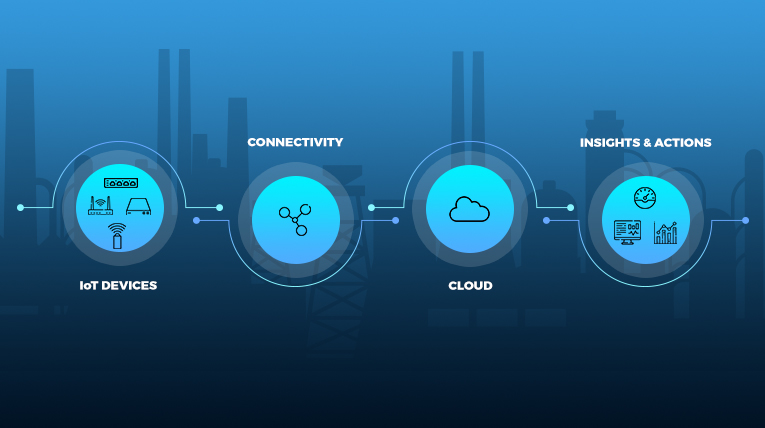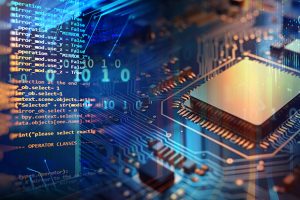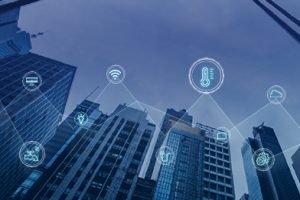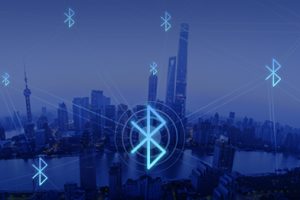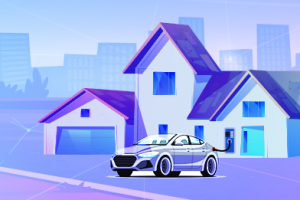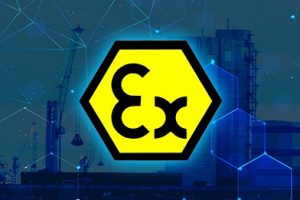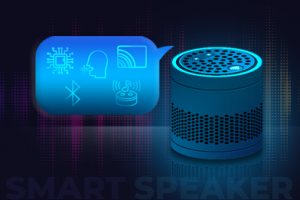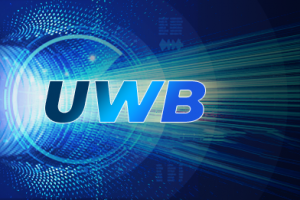In the new era of digitalization, Industrial IoT is expected to grow to be a large-scale, high-growth market with a revolutionary impact across a wide range of industries ranging from Manufacturing, Transport and logistics, Oil and gas, Building Management System, Medical Healthcare, Energy and Utilities & many more.
The Covid-19 pandemic has further accelerated the growth of Industrial IoT and digital transformation across industry verticals. According to one research, the global Industrial IoT market is expected to reach $751.3 billion by 2023.
Table of Contents
Emerging Trends in Industrial IoT
The Industrial IoT or IIoT is defined as “Machines, computers, and humans enabling intelligent industrial processes using advanced data analytics for revolutionary business outcomes”. Let’s take a look at the emerging trends that will play a big role in Industrial IoT in 2021.
- Evolution of communication and wireless technologies: As we know, the Industrial Internet of Things (IIoT) maintains the connection between industrial equipment, machines, and applications. The evolution of 5G will make a great impact on the connectivity of the Industrial IoT industry. The 5G network will allow the IoT devices to communicate the data at a faster speed, increased security, and greater reliability to support mission-critical operations
Other low power technologies that are being widely used for IIoT technologies depending on the use case and requirements are as follow:- Bluetooth Low Energy (BLE)
- Sub-1 GHz Wireless Solutions
- Wi-Fi® + Bluetooth®, Zigbee®
- RFID
- Ultra Wide Band (UWB)
- LoRaWAN®
- Increased use of Artificial Intelligence (AI) and Machine Learning (ML): Today in 2021, Artificial Intelligence (AI) is transforming the Industrial IoT space the most, enterprises are leveraging the benefits of implementing AI in the Industrial Internet of Things (IIoT) applications to make real-time decisions. Cleaning, aggregating, and processing the right data is the most important aspect of AI. In addition to this, nowadays, enterprises are moving to Edge AI where the data is processed locally on the hardware device rather than relying on the centralized server. This enables fast processing of the data and making informed decisions at the right time. Artificial Intelligence will be aided by the increasing use of Machine Learning (ML) in which data from a specific device or process is sent to an AI algorithm without the need for human intervention.
- Rising Industrial Automation: Automation not only helps making the task more efficient and time-saving but also avoids human contact as much as possible. It further prevents human errors and increases overall productivity. Due to the COVID-19 pandemic, Industries are investing more in Industrial automation to reduce the number of operators on the production floors. This helps to comply with the rules of social distancing and reduces the risk of exposure to the virus.
- Predictive Maintenance: Predictive maintenance is one of the hottest buzzwords in the space of the Industrial Internet of Things (IIoT). It is a way of preventing asset failure by analyzing production data for patterns and predicting issues before they occur. Previously, manufacturers used to carry out scheduled maintenance and other processes to prevent downtime which is reduced by implementing predictive maintenance in the IIoT solutions. It also helps to gain real-time alerts, analyze asset nature, enhance uptime and improve production throughput.
- Remote monitoring and Operations : Remote monitoring helps to monitor and control the equipment from anywhere and at any time. This allows for continuous monitoring and decision-making based on real-time information regardless of the personnel’s location.
Challenges in Industrial IoT solutions
The benefits of Industrial IoT solutions also come with some pitfalls. Let’s look at some of the challenges that enterprises might have to face while implementing IIoT solutions :
- Connectivity: When it comes to Industria (IIoT) solutions, connectivity among the devices and equipment becomes one of the foundational pillars for the solution’s success. Choosing the right communication technology is important to ensure that the right amount of information & data is transferred between the equipment and systems constantly and uninterruptedly.
- Cybersecurity risks: With the expansion of the industrial IoT, cybersecurity risks also increase, in case of a cybersecurity attack, not only sensitive data is realized but it can also bring production floors or manufacturing to a standstill. These risks can be overcome by running a risk assessment at consistent intervals during the IIoT device’s lifecycle.
- Data Analysis: The Industrial IoT devices such as sensors, gateways, actuators, and connected devices generate massive amounts of data. Therefore organizing, processing the valuable data at the right time is very important to make effective decisions.
Why is VVDN the right partner of choice for the Industrial Internet of things?
VVDN helps OEMs with complete End-to-End Industrial IoT solutions in the domains of Smart Building Automation, Smart Metering, EV Chargers, Asset & Warehouse Tracking, Energy and Utilities, etc. At VVDN, we help the customers in developing IIoT solutions around the target objectives. VVDN’s deep focus on emerging technologies such as AI/ML, Edge Computing, and Cybersecurity helps our customers to usher in the new era of IIoT space.
Click here to know more about VVDN Industrial IoT expertise.

















